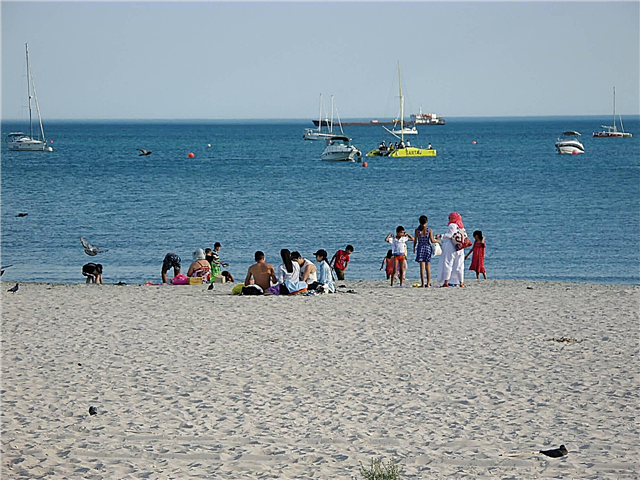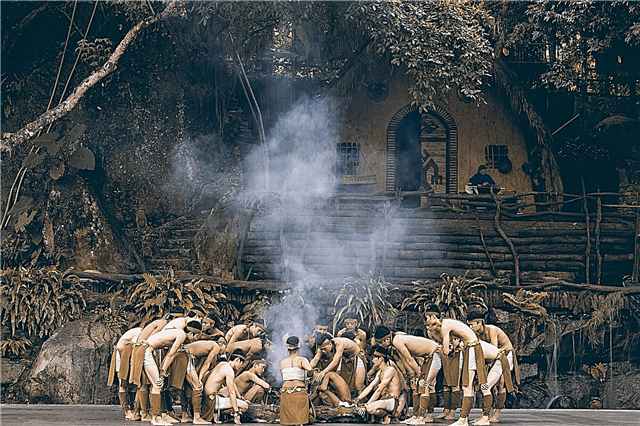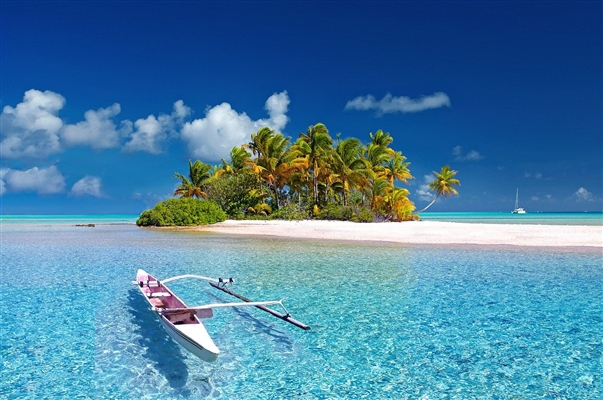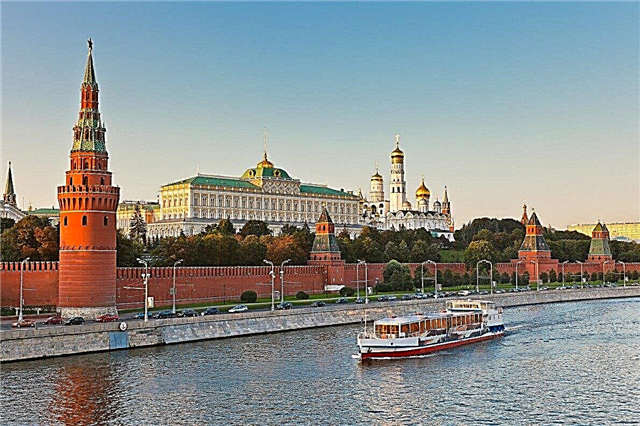Over the centuries, the territory of today's central Russia has been actively built up with defensive structures of various types. This was due to the existence of separate principalities and the constant relocation of borders that needed to be defended. Some fortifications were erected in cities and were of key importance for the development of the area. They gave shelter to residents in the event of an attack, served as a deployment site for troops and gradually turned into the heart of the city.
In addition to the obligatory walls, towers, loopholes and other things related to military affairs, chambers, temples, and outbuildings could be located within the boundaries of each Kremlin. Now all these beauties have become part of tourist routes. Most of them are well maintained and used as museums or for administrative purposes.
The most interesting and beautiful kremlin in Russia
List with photos, names and descriptions of the best kremlin.
Moskovsky
Built at the end of the 15th century. Located on Borovitsky Hill on the banks of the river. It was not only of strategic importance, but also declared the ambitions of Moscow as the "third Rome". In modern times, it is the residence of the President of the country. The Kremlin and Senate palaces have been restored. Research and excavations are being carried out on the Kremlin Hill. The territory also houses the Tsar Bell and Tsar Cannon, the Assumption and other cathedrals.

Kazansky
The current appearance was formed by the 16th century. The oldest part of the city. Initially it was a fortress and played an important role in the confrontation between the Bulgars and one of the principalities of the Golden Horde. Inside the walls, which had 13 towers, temples, a mosque, a palace, and an office were built. Now it is the residence of the head of Tatarstan. There are also a number of municipal services, several museums and the Khazine Gallery.

Novgorod
Built in the 15th century on the banks of the Volkhov River. Also called Detinets. The restructuring of the wooden predecessor of the Kremlin was initiated by Ivan III, who even invested his own funds. The walls are stretched into an uneven oval, there are towers around the entire perimeter, only three have not survived. On the territory there are three churches and St. Sophia Cathedral, as well as the monument "Millennium of Russia", "Eternal Flame" and others.

Kolomensky
Built in the first half of the 16th century. It was necessary to strengthen the borders in the confrontation with the Tatars. The fortress and its structures have suffered more from time and vandals than from wars. Seven towers have been preserved and restored, although initially there were 16 of them, and partly a wall. On the territory of the Kremlin, which has an area of 24 hectares, there are several churches, two monasteries, two cathedrals.

Pskov
Built at the turn of the XI-XII centuries on the banks of the Velikaya River. Dovmont city is part of the complex. It was added later for additional protection of the city and began with a new level of walls. During excavations, foundations of temples and part of wall paintings were found here. The territory, in addition, includes the Trinity Cathedral, Prikaznye Chambers, powder magazines, a bell tower, 7 towers and more.

Rostov
Built in the middle of the 17th century. It was originally the residence of the Metropolitan. Although it was built in the traditions of defensive architecture, it had no defensive missions, so there are deviations from the canons of the style in construction: wide gates, no loopholes, a different design of windows, etc. The architectural ensemble has changed somewhat over time. Now it includes the Assumption Cathedral, garden, palace and cathedral square.

Nizhny Novgorod
Built at the beginning of the 16th century at the confluence of the Volga and Oka. The city was a border town, so there was a military outpost here, and an army was constantly stationed. Subsequently, the area was laid out for entertainment events. The walls stretch for 2 km. 13 towers have been preserved and restored. Within the walls there is a cathedral where Kuzma Minin is buried. Now the Kremlin is the seat of high-ranking officials, including the governor and mayor.

Tula
Built at the beginning of the 16th century. The oldest building in the city. The Kremlin was needed to secure the path to Moscow. The area is over 6 hectares. The walls rise 13 meters. The stone fortress has 9 towers, 4 have gates. There are 2 cathedrals inside the Kremlin. The architectural complex was created using different styles, but it looks like a single whole. Some details speak of the Italian school of architects.

Astrakhan
Built in the second half of the 16th century. Its origin is associated with the transfer of the city, and the construction of a kind of fort. The place was not chosen by chance: it was difficult to get close because of the waters of rivers and canals, and there was also an elevation - Zayachiy Bugor. Now - a branch of the museum-reserve. The ensemble includes many objects: towers, a powder magazine, a torture chamber, barracks, and a consistory.

Tobolsk
Built in the 17th-18th centuries. The only stone Kremlin in Siberia. It did not have a pronounced defensive value. The construction was planted from the capital, from where the architects were sent. Seven towers have survived, the walls and all structures within the Kremlin are white stone. The complex includes: the judicial council, cathedrals, a bishop's house, a monastic building, a bell tower and more.

Ryazan
In the XII century, the first defensive rampart was built here. The Assumption Cathedral and the nearby bell tower had a navigational significance: only they were visible, as landmarks when rafting along the Oka. None of the towers of the fortress walls have survived. Churches and temples date back to different centuries, but fit into the general style. Now the Kremlin has been transformed into a museum-reserve. It is one of the oldest in Russia.

Zaraisky
Built in the first half of the 16th century. In the first years he was attacked by the Golden Horde. He was repeatedly besieged, but almost always won the upper hand in confrontation with the enemy. The walls with towers and gates, 2 cathedrals and a religious school have been preserved. Now the territory of the Kremlin is given over to the museum of the same name. It has been operating since 1918. The exhibition includes objects of art from all over the world.

Dmitrovsky
Built in the XII century. Originally - the residence of the princely family. At different times, the fortress was under the command of the Lithuanians and Poles, but not for long. Converted into a museum-reserve in 1918. It has a picturesque and long rampart that replaced the walls. Three roads pass through it. One - through the recreated Nikolsky Gate. The main attraction is the Assumption Cathedral.

Uglich
Built in the 15th century, but later it was supplemented with new structures and fortified. Located on the banks of the Volga. The old defensive redoubts have been destroyed; their existence can only be judged by the remains of the ditch. The Transfiguration Cathedral dates from the 17th century, at the same time the Church of Dmitry on Blood appeared (on the occasion of the death of the Tsarevich), and the building of the City Duma was erected in 1815.

Syzransky
Built in 1683 at the confluence of three rivers. Its construction is associated with the expansion of the country to the southeast. Of the five original towers, one has survived - the Spasskaya. It was a gateway, but then underwent modernization and a church appeared inside, now a museum is based in it. Alleys and flower beds are laid out nearby. There is also another church on the territory of the Kremlin, built in 1717.

Verkhotursky
Founded in 1698. The Kremlin acquired its present appearance already in the 18th century. It is the only building of its kind in the Middle Urals. It was originally a huge manor house surrounded by walls and towers. Now the Kremlin is a museum and historical complex. There is a museum "Tsars' granaries", tourists have access to the bell tower. The main attraction is the Trinity Cathedral.

Vologda
Founded in 1567. It had defensive functions, especially the Kremlin was in demand in the 17th century. The fortress was surrounded by a river and ditches. Partially they survived, and one moat later became a river. The foundations of the shopping malls remained visible.Sightseeing: St. Sophia Cathedral, a former palace temple - now a church, a bell tower, a complex of the Bishops' court. The latter is sometimes mistakenly called the Kremlin.

Serpukhovsky
Built in 1374. The first option is made of oak. When strengthening the banks of the Oka, stone walls appeared and other structures were altered. Was exposed to raids from the Crimean side. Only the foundations of some buildings have survived, two detached fragments of the wall and the Trinity Cathedral. Despite their current position, the ruins are constantly attracting explorers and tourists. Ancient objects such as coins and crosses have been repeatedly found here.

Gdovsky
The first mention is the XIV century. Located in the city of the same name. The first fortifications were made of earth, stone walls replaced the embankments, and then towers. The Kremlin went through sieges, devastation, destruction and so on, but every time it won back and rebuilt. The main cathedral of the fortress was blown up during the Second World War. It was rebuilt anew in the 90s of the last century according to the existing images and drawings.

Mozhaisky
Construction was carried out over periods, the walls were constantly strengthened, stretching for a total of several centuries from the XII to the XVII century. Little has survived from the once important outpost: a gate with a section of a wall, fragments of a fence, earthen embankments, and fragments of towers. Excavations have been carried out several times. The following items were found: a poker, a chess piece, a reliquary icon, a bone comb, and so on.
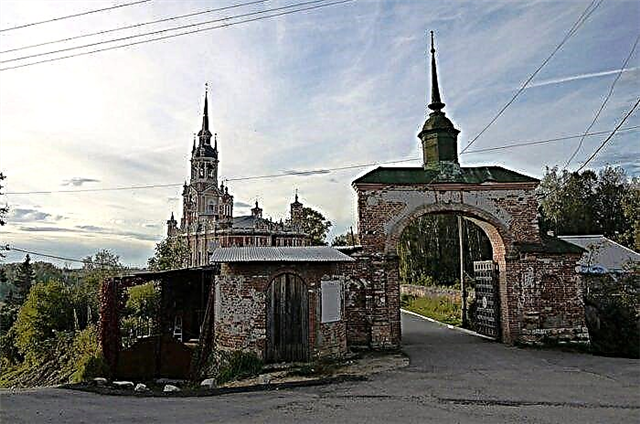
Volokolamsky
The construction of individual parts began in the 15th century. It is located on the territory of the settlement of the same name. It differs from structures of this type: little has survived, it is not known for certain what exactly was here originally. During the excavations, traces of the wooden fence of the Kremlin were found. At the moment, the complex includes 2 cathedrals built in different centuries and a five-tiered bell tower.

Tsarevokokshaisky
The construction was completed in 2009. Located in Yoshkar-Ola. Previously, there were defensive structures here, but only minor traces of them, found during excavations, remained. The Kremlin has a rectangular shape, surrounded by red brick walls with towers. It is used as a recreated historical monument, as well as a platform for city entertainment events, agricultural exhibitions.

Smolensk Kremlin
Built at the turn of the 16th-17th centuries. It had an important defensive value, therefore it was constantly fortified. The architect used both old techniques in building a fortress and new trends. The wall had a three-tier combat system. Especially the fortress suffered during the withdrawal of Napoleonic troops, who almost completely destroyed it. 18 towers have survived, although there were 2 times more of them initially.

Porkhovskaya fortress
Built in 1387. It is located in the central part of the city of the same name. The original purpose was to strengthen the trade route. During its existence, it experienced a siege and decay. The current state of most of the facilities is depressing, close to emergency. There are 3 towers. Within the fortress there are museums of the Porkhov Post Office, the Museum of Local Lore and the Nikolskaya Church.
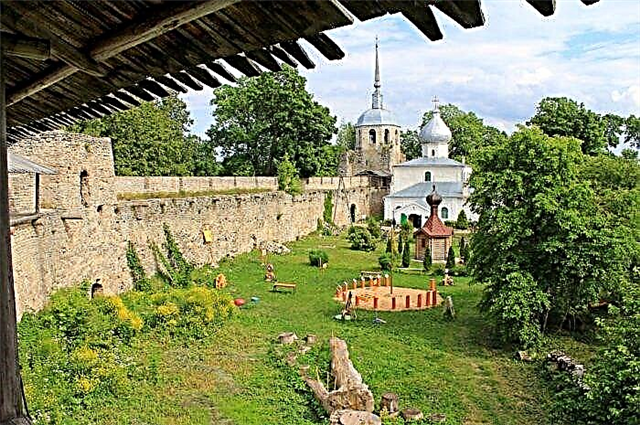
Izborsk fortress
Built at the beginning of the XIV century. It became the basis for the city of the same name, which arose around the fortress. The initial meaning is defensive. Rebuilding and erection of new redoubts were carried out, as the attacks were constant. At the moment it is being restored. The buildings most in need of restoration are the towers and the wall. Nikolsky Cathedral and the military passage have already regained their former appearance and are available for inspection.



